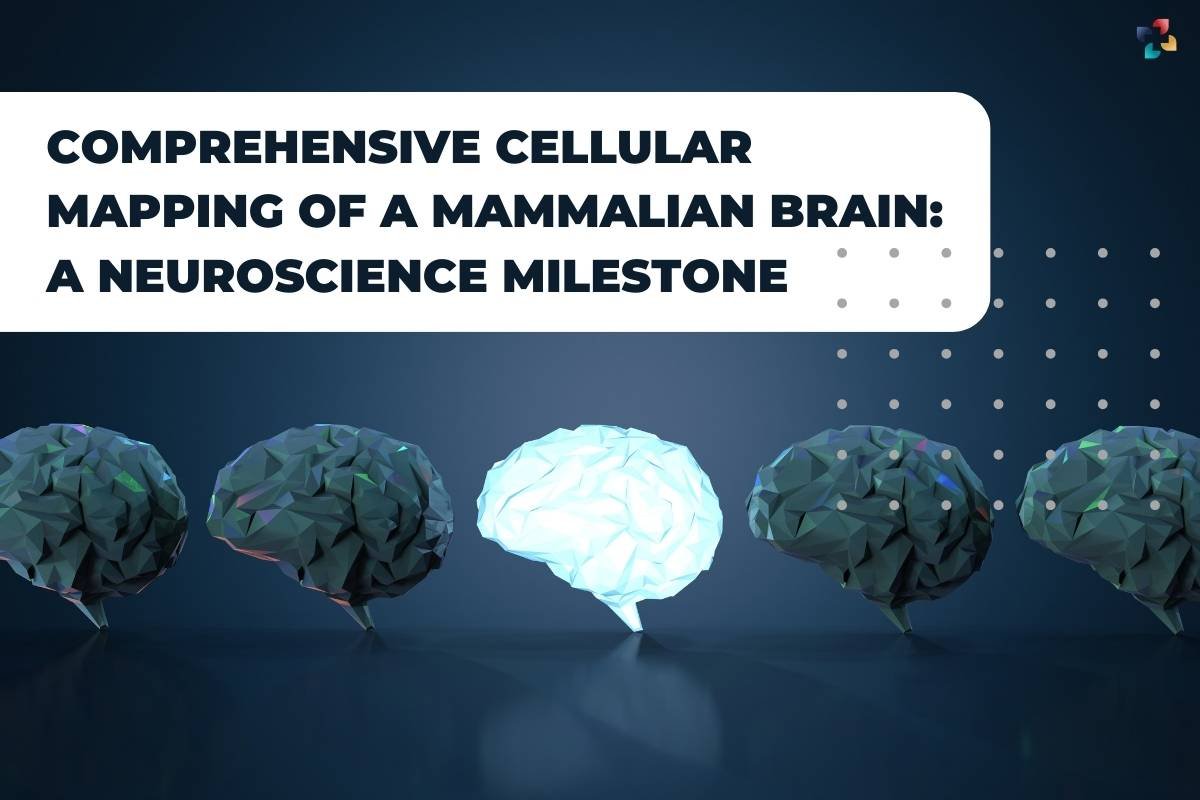The development of precise medicines for brain illnesses and a deeper understanding of the human brain are made possible by a ground-breaking cell atlas that details over 32 million cells in the mouse brain.
An international team of researchers has produced the first-ever full cell atlas of an entire mammalian brain. This atlas functions as a map of the mouse brain, detailing the characteristics, distribution, and molecular makeup of over 32 million cells as well as the connections among them. Since the mouse is the most often used vertebrate experimental model in neuroscience research, a better knowledge of the human brain—possibly the most powerful computer in the world—is made possible by this cellular map.
Additionally, the cell atlas sets the stage for the creation of a fresh batch of targeted medications for patients suffering from neurological and mental illnesses of the brain.
The results, which are included in a set of ten studies published in Nature, were made possible by funding from the National Institutes of Health’s Brain Research Through Advancing Innovative Neurotechnologies® Initiative, or The BRAIN Initiative®.
“The mouse atlas has given researchers the details needed to understand human brain function and diseases, bringing the complex network of mammalian brain cells into unprecedented focus,” stated Joshua A. Gordon, M.D., Ph.D., the director of the National Institute of Mental Health, a division of the National Institutes of Health.
An Extensive Diagram of the Mouse Brain
The types of cells and how they are arranged inside the various mouse brain areas are described in the cell atlas. Together with this structural data, the cell atlas offers an exceptionally comprehensive catalogue of the transcriptome, or the entire collection of gene readouts in a cell that carry the instructions needed to produce proteins and other biological products. The transcriptome data in the atlas is arranged in a hierarchical manner and describes thousands of distinct cell clusters as well as classes and subclasses of brain cells.
The atlas also describes the cell epigenome, which are chemical alterations to a cell’s DNA and chromosomes that change how the cell expresses its genetic information. It includes information on millions of potential genetic control elements for various brain regions as well as thousands of cell types that are epigenomic.
Combined, the structural, transcriptome, and epigenetic data in this atlas offer a never-before-seen depiction of the diversity and organisation of cells in the mouse brain. The atlas also lists the neurotransmitters and neuropeptides that are utilised by various cell types as well as the connections between them in the brain. This data can serve as a comprehensive schematic for the initiation and transmission of chemical signals in various brain regions. The functioning of brain circuits and the brain as a whole are based on those electrical signals.
Leading-Edge Cooperation and Upcoming Paths
John Ngai, Ph.D., Director of the NIH BRAIN Initiative, remarked, “This product is a testament to the power of this unprecedented, cross-cutting collaboration and paves our path for more precision brain treatments.””
Two of the ten investigations in this collection are financed by the broader NIH BRAIN Initiative, while the remaining seven are supported by the NIH BRAIN Initiative Cell Census Network (BICCN). Developing a thorough inventory of brain cells—where they are, how they develop, how they interact with one another, and how they control their activity—is the main goal of the BICCN, a ground-breaking, multidisciplinary endeavour to better understand the cellular composition of the mammalian brain. This will help us understand how brain disorders arise, progress, and are best treated.
“By capitalising on the distinct attributes of its cross-border and multidisciplinary cooperation, the BICCN achieved feats that no other scientific team has ever managed to achieve,” Dr. Ngai stated. The completion of the cell maps of the human and nonhuman primate brains marks the beginning of the next significant phase in our research.
The next phase of the NIH BRAIN Initiative’s endeavour to comprehend the cells and cellular processes of the mammalian brain is the BRAIN Initiative Cell Atlas Network (BICAN). Together with two other large-scale projects, the Armamentarium for Precision Brain Cell Access and the BRAIN Initiative Connectivity Across Scales, BICAN is a transformative project that aims to revolutionise neuroscience research by shedding light on fundamental principles governing the circuit basis of behaviour and informing new approaches to
1’st Ever Mammalian Brain Cellular Map!
Reference: “A high-resolution transcriptomic and spatial atlas of cell types in the whole mouse brain” by Zizhen Yao, Cindy T. J. van Velthoven, Michael Kunst, Meng Zhang, Delissa McMillen, Changkyu Lee, Won Jung, Jeff Goldy, Aliya Abdelhak, Matthew Aitken, Katherine Baker, Pamela Baker, Eliza Barkan, Darren Bertagnolli, Ashwin Bhandiwad, Cameron Bielstein, Prajal Bishwakarma, Jazmin Campos, Daniel Carey, Tamara Casper, Anish Bhaswanth Chakka, Rushil Chakrabarty, Sakshi Chavan, Min Chen, Michael Clark, Jennie Close, Kirsten Crichton, Scott Daniel, Peter DiValentin, Tim Dolbeare, Lauren Ellingwood, Elysha Fiabane, Timothy Fliss, James Gee, James Gerstenberger, Alexandra Glandon, Jessica Gloe, Joshua Gould, James Gray, Nathan Guilford, Junitta Guzman, Daniel Hirschstein, Windy Ho, Marcus Hooper, Mike Huang, Madie Hupp, Kelly Jin, Matthew Kroll, Kanan Lathia, Arielle Leon, Su Li, Brian Long, Zach Madigan, Jessica Malloy, Jocelin Malone, Zoe Maltzer, Naomi Martin, Rachel McCue, Ryan McGinty, Nicholas Mei, Jose Melchor, Emma Meyerdierks, Tyler Mollenkopf, Skyler Moonsman, Thuc Nghi Nguyen, Sven Otto, Trangthanh Pham, Christine Rimorin, Augustin Ruiz, Raymond Sanchez, Lane Sawyer, Nadiya Shapovalova, Noah Shepard, Cliff Slaughterbeck, Josef Sulc, Michael Tieu, Amy Torkelson, Herman Tung, Nasmil Valera Cuevas, Shane Vance, Katherine Wadhwani, Katelyn Ward, Boaz Levi, Colin Farrell, Rob Young, Brian Staats, Ming-Qiang Michael Wang, Carol L. Thompson, Shoaib Mufti, Chelsea M. Pagan, Lauren Kruse, Nick Dee, Susan M. Sunkin, Luke Esposito, Michael J. Hawrylycz, Jack Waters, Lydia Ng, Kimberly Smith, Bosiljka Tasic, Xiaowei Zhuang and Hongkui Zeng, 13 December 2023, Nature.
Also Read: ‘Brain Atlas’ Maps The Intricate Organ In Stunning Detail







